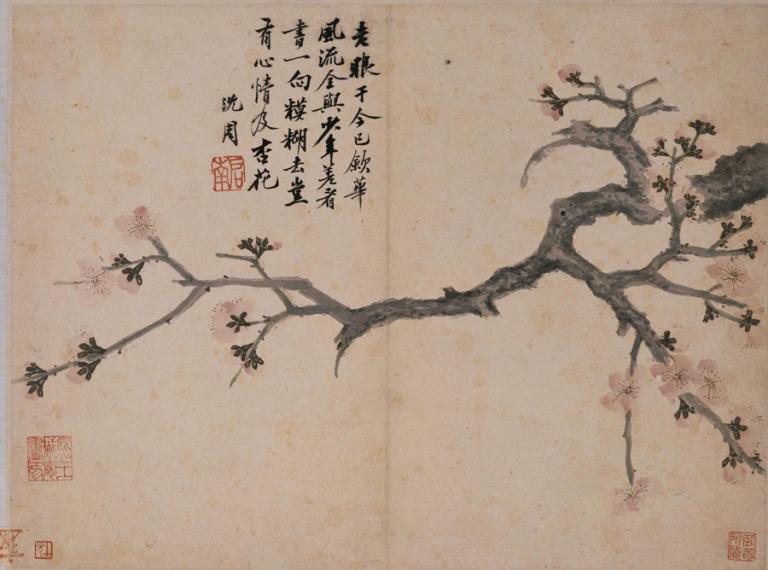Flower and Bird Painting
4 min readFlower-and-bird painting should be considered as the earliest kind of Chinese painting as the images of flower and bird appeared on potteries even in the Neolithic period. Artists in all dynasties had a special passion for images of flower and bird. In the Southern and Northern dynasties, it became a certain sort of painting.A group of painters in this period became famous for their painting of flowers and birds. In Sui and Tang dynasty, due to its popularity among upper classes and in the decoration of the royal court and official residences, flower-and-bird painting gained further development.
The wel1-known painter Yan Liben had painted mandarin ducks playing in the royal garden. Xue Ji was famous for his painting of crane. The sixfold folding screen with crane paintings had became the model for contemporary painters. Bian Luan excelled in birds painting. When Silla, ancient Korean Kingdom sent peacocks to pay tributeto Chinese emperor, he was ordered by the emperor to draw the peacocks. He painted two peacocks, one front-faced and one back-faced. Both of them were dancing elegantly and the beautiful color and whirling posture were really impressive. The flower-and-bird paintings mentioned above were mainly painted in a meticulous way.

At the time there were also painters using one single color or just ink to paint flowers-and-birds, for example, Xiao Yue, who draw one-color bamboo which was considered with refined elegance; Ying Zhong, whose ink flower-and-bird painting wasas beautiful as colored painting and considered as the origin of water-ink flower-and-bird painting. At the end of Tang dynasty, many painters moved to Sichuan province to avoid the chaos caused by endless wars and brought flower-and-bird painting with them. Diao Guangyin, Teng Changyou, etc. all left their flower-and-bird paintings in temples in Sichuan area. According to the classification ofChinese painting, animal paintings were considered as part of flower-and-bird painting. The painting of horses and cattle also developed greatly in Tang dynasty, which was demonstrated by famous painters such as Cao Ba, Han Gan, Han Huang and Dai Song, etc.
The most famous flower-and-bird painters in Tang dynasty include: Xue Ji (649-713), with a courtesy name Sitong, was born in Fengyin, Puzhou (today Wanrong in Shanxi province) He was a painter as well as a calligrapher who once served as Minister of Board of Rites. He was known as one of the four greatest calligraphers in early Tang dynasty. He was good at painting figure, Buddha images trees and stones, flowers and birds, especially cranes. He was most famous for his crane painting design on the sixfold folding screen.
Bian Luan, born in Chang’ an(today Xi’ an in Shaanxi prorince), served as the Attendent on Right Guard. He was good at painting flowers and birds, plants and trees, bees and butterflies, sparrows and cicadas, especially flowers with broken branches. He was accomplished in sketches of flowers and birds. Once he was orderedby the emperor to do a painting of two peacocks sent as tributes from the country Silla, in which their whirling posture were really impressive. He was in favor of applying thick and bright colors with his gentle style and skills in drawing flowers and birds. Murals of flowers and birds he created for temples were praised by common people.
Cao Ba was from Jiaojun (today Bzhou in Anhui province). It was said that he was the offspring of Cao Cao (founder of the Kingdom of wei in Three Kingdoms period).
He was in full swing in the flourishing period of Tang dynasty and once served as the General of Left Militant Guard General. He was good at figure painting and horse painting. Ordered by the emperor, he had repaired Yan Liben’s famous portraits of Figures of Meritorious Officials in Lingyan pavilion. Noted poet Du Fu had highly praised his horse painting in his poem.

Han Gan was from Jingzhao(today Xi’ an, in Shaanxi province) or from Daliang (today Kaifeng, in Henan province). He was another famous painter in the flourishing period of Tang dynasty. He served as the Attendant of Court for the Palace Revenues.
When he was young, he worked in a tavern. Wang Wei recognized his talent in painting and supported him financially to make him practicing painting. He first learned from Cao Ba and attached importance to sketch. He almost sketched all famous horses in the court before he became famous. The horses he sketched were all portly and strong. Han Gan painted the flesh rather than bones, yet the horse he painted were all in right shape and calm looks, which echoes the time spirit. His representative works include A White Horse and Horse Shepherd.









